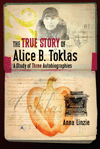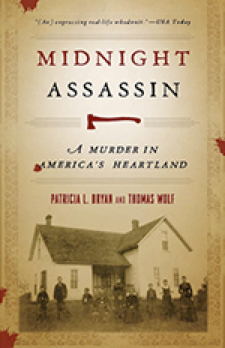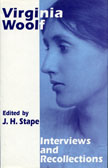The True Story of Alice B. Toklas
“The True Story of Alice B. Toklas is a deconstructive excursus, theoretically astute and cannily playful, that juxtaposes three autobiographical texts by and about Toklas, including her famous cookbook and Stein’s ‘autobiography’ of her partner. In this study, Anna Linzie has addressed and finessed some tenets of literary scholarship, including generic hierarchies, singular versus collaborative authorship, assumptions of value, decorums between critic and her subject, and critical reception as a mode of invention. With this fascinating addition to the literature concerning Gertrude Stein and her circle, Linzie produces various challenges to the notions of ‘true story.’”—Rachel Blau DuPlessis, author, Drafts and Blue Studios: Poetry and Its Cultural Work
“Just as Stein confounds traditional genre expectations of truth, authenticity, authorship, and origins in The Autobiography of Alice B. Toklas, so Anna Linzie unsettles readings that invoke traditional genre expectations in their assessment of Toklas’s autobiographical works. In Linzie’s account, Toklas ’s form of textual agency includes absence and silence about her own life, while highlighting aspects of Stein’s life that Toklas helped to shape and promote. This work is of interest to anyone who studies Stein, autobiography, or feminist/gender theory.”—Deborah Barker, associate professor of English, University of Mississippi
In this original and intriguing study, Anna Linzie examines three mid-twentieth-century texts never before treated as interrelated in a book-length work of literary criticism: Gertrude Stein’s The Autobiography of Alice B. Toklas (1933) and Alice B. Toklas’s The Alice B. Toklas Cook Book (1954) and What Is Remembered (1963). Taking these three texts as intertexts or as an assemblage of the true story of Alice B. Toklas, Linzie challenges assumptions about primary authorship and singular identity that have continued to limit lesbian and feminist rereadings of autobiography as a genre and of Stein and Toklas as writers and historical figures.
The True Story of Alice B. Toklas explores how the concept of autobiography as a primarily referential genre is challenged and transformed in relation to autobiographical texts written about the same person, the same life, but differently, by different writers, at different points in time. The concept of one true story is deconstructed in the process as Linzie modifies Homi K. Bhabha’s “almost the same but not quite/not white” for the purposes of this particular study as “almost the same but not quite/not straight.” The investigation moves simultaneously on the planes of textuality and sexuality in order to provisionally articulate a “lesbian autobiographical subject” in Linzie’s reading of these three texts.
Linzie’s study fills a gap in literary criticism where Stein’s companion and her work have been more or less neglected, conceptualizing the Stein-Toklas sexual/textual relationship as fundamentally reciprocal. The True Story of Alice B. Toklas provides a new critical perspective on Toklas as indispensable to Stein’s literary production, a cultural laborer in her own right, and a writer of her own books. Making a significant contribution to recent lesbian/feminist reconceptualizations of the genre of autobiography, this study will fascinate Stein and Toklas scholars as well as those interested in queer and autobiography studies.





